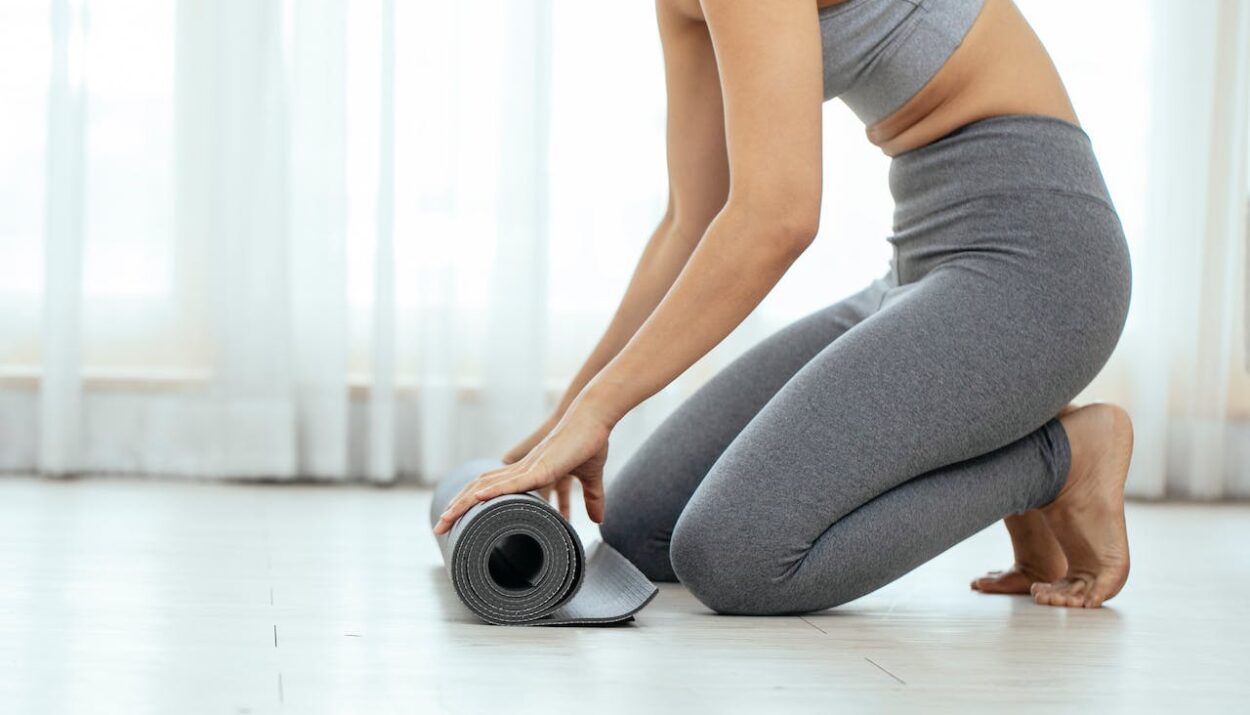Should you work out with the flu? Navigating the decision to exercise when battling the flu requires careful consideration. Should you push through the discomfort or prioritize rest? We unravel the intricacies of exercising during illness, exploring the risks and potential consequences. Arm yourself with the knowledge you need to make a well-informed decision about your fitness journey during flu season.
Flu season fitness decoded: “Should you work out with the flu?” Unravel risks and make the best choices for a healthier you!
In this article:
- Should you work out with the flu? Understanding Your Body’s Signals
- How the Flu Affects Exercise: Should You Work Out with the Flu?
- Potential Risks: Should You Work Out with the Flu?
- Exercising During Illness: Flu, Cold, and Other Considerations
- Tips for Returning to Exercise After Illness
SHOULD YOU WORK OUT WITH THE FLU? UNDERSTANDING YOUR BODY’S SIGNALS
To answer the question, ‘Should you work out with the flu,’ it’s crucial first to understand your body’s signals.
In its wisdom, the human body sends out subtle yet impactful signals, often manifesting as fatigue, weakness, and changes in body temperature. Recognizing and interpreting these cues becomes paramount in determining the appropriate response to the onset of flu symptoms.
Fatigue is a standard signal during illness. It is the body’s way of conserving energy to combat the infection. Acknowledging this sign is fundamental to understanding that rest may be more beneficial than exertion in such circumstances.
Another indicator is weakness, which suggests the body directs its resources toward healing. This highlights the need for a cautious approach to physical activity.
Changes in body temperature, often accompanied by fever during the flu, serve as a call for attention to allow the immune system to function optimally.
Recognizing and respecting these cues establishes a foundation for deciding whether to exercise or prioritize rest during the challenging period of flu onset.
HOW THE FLU AFFECTS EXERCISE: SHOULD YOU WORK OUT WITH THE FLU?
The flu, arising from a viral infection, initiates a sequence of responses within the body. It includes heightened activity in the immune system to combat the invading virus. However, vigorous exercise during this process may redirect essential resources away from the immune response, potentially compromising the body’s ability to fight the infection effectively. Consequently, pushing the body through strenuous workouts during the flu can worsen symptoms, prolong recovery, and increase the risk of complications.
In tandem with heightened immune activity, fatigue emerges as a prevalent symptom of the flu, further complicating exercise. The body’s energy stores are redirected towards the immune battle, leading to the depletion and weakening of individuals. If you choose to train in that condition, it puts additional stress on an already strained system. It may hinder the body’s ability to restore optimal health.
Moreover, the flu can impact respiratory function, resulting in symptoms like coughing or shortness of breath. Physical activity may intensify these symptoms, making exercise uncomfortable and potentially risky for individuals with compromised lung function.
POTENTIAL RISKS: SHOULD YOU WORK OUT WITH THE FLU?
Should you work out with the flu? Before you make a final decision, think about potential risks:
- Compromised Immune Response: Vigorous exercise may divert essential resources from the immune system, compromising its ability to combat the flu virus effectively. It can prolong the duration of illness and increase susceptibility to complications.
- Worsening of Symptoms: Strenuous workouts during the flu can exacerbate fatigue, body aches, and respiratory distress. It hinders the body’s recovery process and may lead to increased discomfort and prolonged illness.
- Increased Risk of Complications: Pushing the body through intense exercise while battling the flu may elevate the risk of complications, including respiratory issues, pneumonia, and myocarditis. Individuals with pre-existing health conditions may be particularly vulnerable to heightened risks.
- Impact on Cardiovascular Health: The strain of working out during flu symptoms may put additional stress on the cardiovascular system. This heightened strain could adversely affect heart health for individuals with underlying cardiovascular conditions.
While exercise is generally beneficial for health, attempting strenuous workouts during the flu presents significant potential risks. Approach the decision to engage in training during this time with caution, considering the possible consequences for overall well-being.
EXERCISING DURING ILLNESS: FLU, COLD, AND OTHER CONSIDERATIONS
You should apply the same caution to other illnesses. The severity and symptoms of each condition are crucial in determining the appropriateness of physical activity.
Light to moderate exercise may be feasible for milder illnesses like the common cold, provided symptoms are primarily above the neck. However, if necessary, listening to your body and scaling back intensity is essential.
In contrast, more severe illnesses, such as respiratory infections or fevers, often necessitate complete rest. Pushing the body during such conditions can not only hinder recovery but also can lead to potential complications.
Individuals with chronic health conditions should exercise extra caution. Diseases like asthma, heart conditions, or autoimmune disorders may require tailored exercise plans or even complete rest during illness to prevent symptom worsening.
The decision to exercise during illness depends on factors such as the type and severity of the illness, overall health status, and the specific symptoms present. Consult with a healthcare professional to ensure exercise choices align with the body’s capacity for recovery.
TIPS FOR RETURNING TO EXERCISE AFTER ILLNESS
After considering the risks outlined in ‘Should you work out with the flu’ and deciding to take a break, here are some tips for safely returning to your usual activities:
- Start Slow: Begin with low-intensity activities to gauge your body’s response. That might involve light walking, stretching, or gentle yoga. Gradually increase the intensity as your strength and energy levels improve.
- Listen to Your Body: Pay close attention to how your body responds to exercise. If you experience excessive fatigue, dizziness, or increased discomfort, scale back the intensity or duration of your workout. Allow your body the time it needs to recover fully.
- Hydrate and Nourish: Adequate hydration and proper nutrition are essential for recovery. Ensure you’re replenishing fluids lost during illness and providing your body with the nutrients it needs to rebuild strength.
- Choose Low-Impact Activities: Opt for low-impact exercises, especially if you’ve experienced respiratory symptoms during your illness. Activities like swimming, cycling, or walking are usually gentler on the body.
- Consult with a Professional: Before resuming a rigorous exercise routine, consider consulting with a healthcare professional or fitness expert. They can help tailor an exercise plan that aligns with your recovery needs.
- Prioritize Rest: Recognize the importance of rest in the recovery process. Allow adequate time for your body to recover between sessions, and avoid pushing yourself too hard too soon.
Remember, the goal is to rebuild your strength and stamina gradually.
_____
Concluding the flu fitness dilemma: “Should you work out with the flu?” Let your health guide your decisions, and remember that listening to your body is the ultimate key to overall well-being. Choose wisely, and stay healthy!
This post may contain affiliate links. You can read the affiliate disclosure here.









